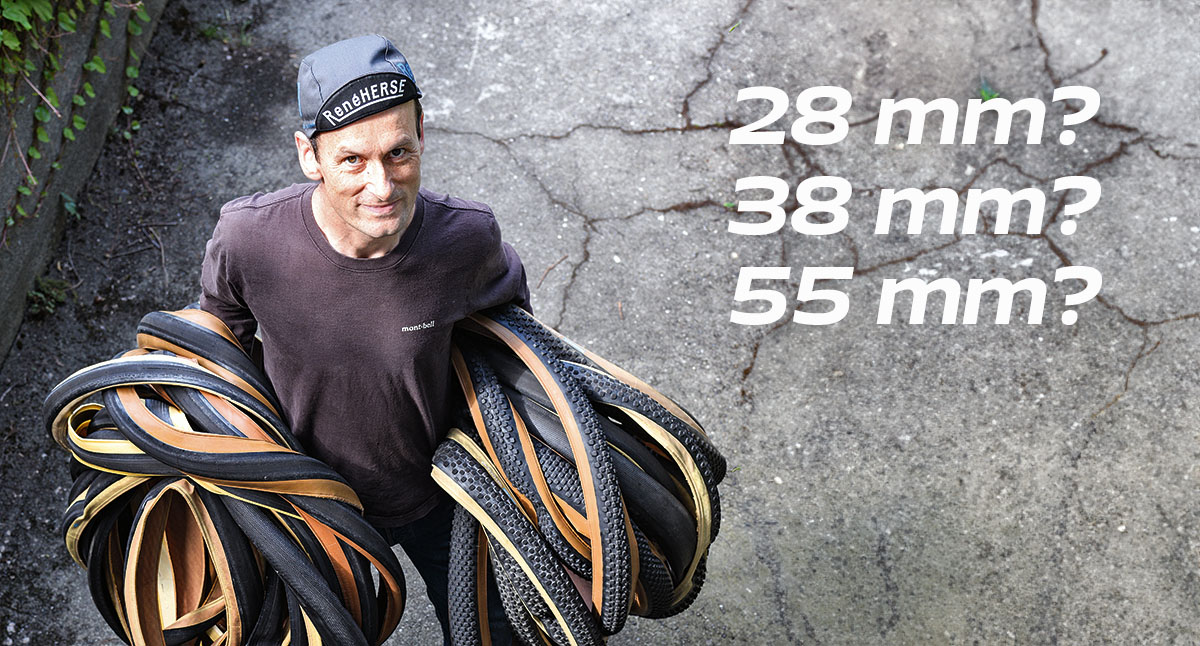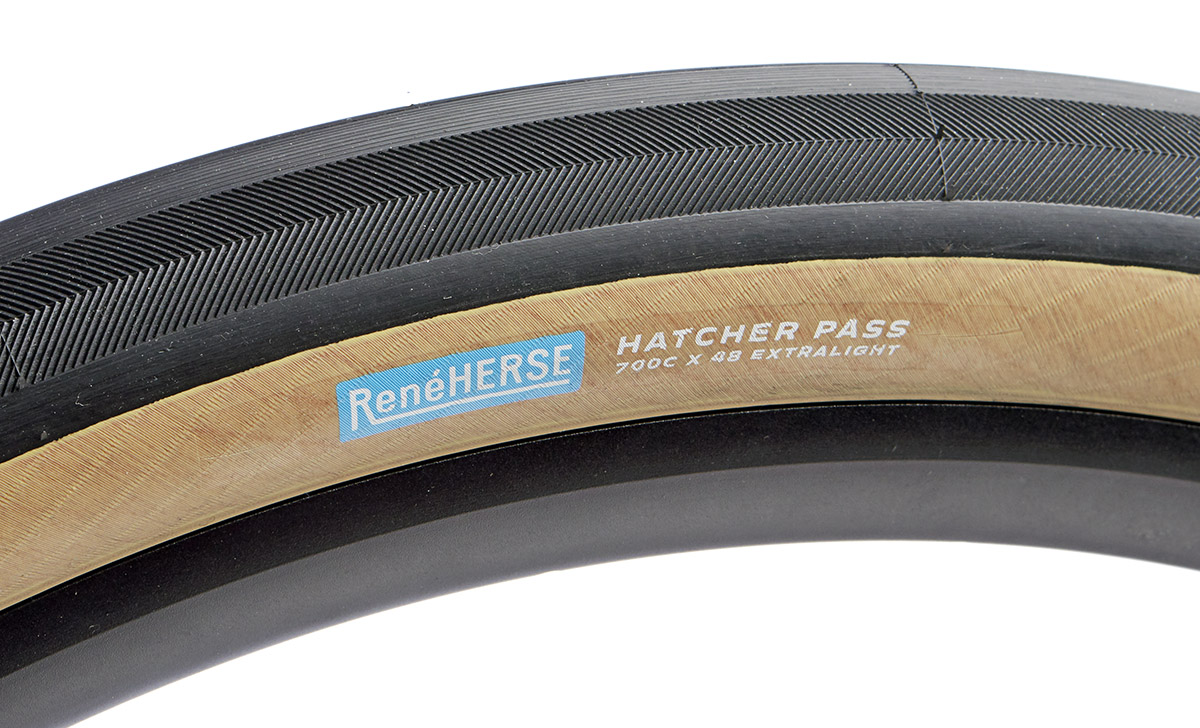How Wide is Right for Me?
Tire choice used to be simple: If you wanted to go fast, you rode narrow tires and ran them at high pressures. If you valued comfort and didn’t mind giving up speed, you went with wider tires. Not anymore! When we published our book The All-Road Bike Revolution, we recommended 38 mm tires as the starting point for most riders. Just a few years ago, that was still pretty far out.
Now cyclingnews.com tested tires at the Silverstone Sports Engineering Hub. Their results confirm the testing we’ve done over the last two decades. The headline on cyclingnews.com sums up the new thinking: “40 mm road tyres are faster for nearly everyone—even with aerodynamics accounted for.” They noted that 40 mm was the widest they tested, so they don’t know whether even wider tires would be even faster.
Has the world turned upside down? Should we just slap on the widest tires that fit on our bikes? What if we’re in the market for a new bike—how much tire clearance should we look for? Is there an upper limit? At some point, wider can’t be faster any longer. Otherwise we should all be riding fatbikes.
Today we’ll look at the trade-offs that come with various tire widths, so you can find the perfect tire size for your riding style and your preferences.
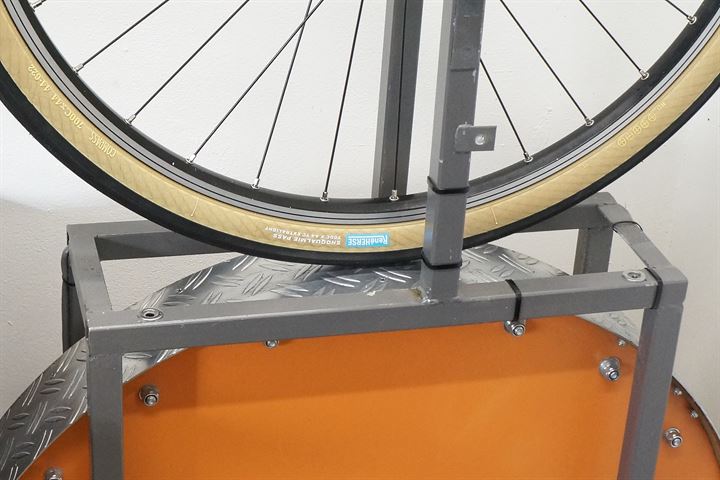
First we’ll talk about the fundamentals: What has changed? Why aren’t narrow tires faster? In the past, tires were tested in the lab on a steel drum (above). This setup measured only the losses due to deformation of the tire (what experts call ‘hysteretic losses’).
When you look at the tire in isolation, less flex is faster. Higher pressure makes the tire flex less. And narrow tires can withstand higher pressure. That’s why narrow tires at ultra-high pressures seemed to roll fastest—in the lab, without a rider on the bike.
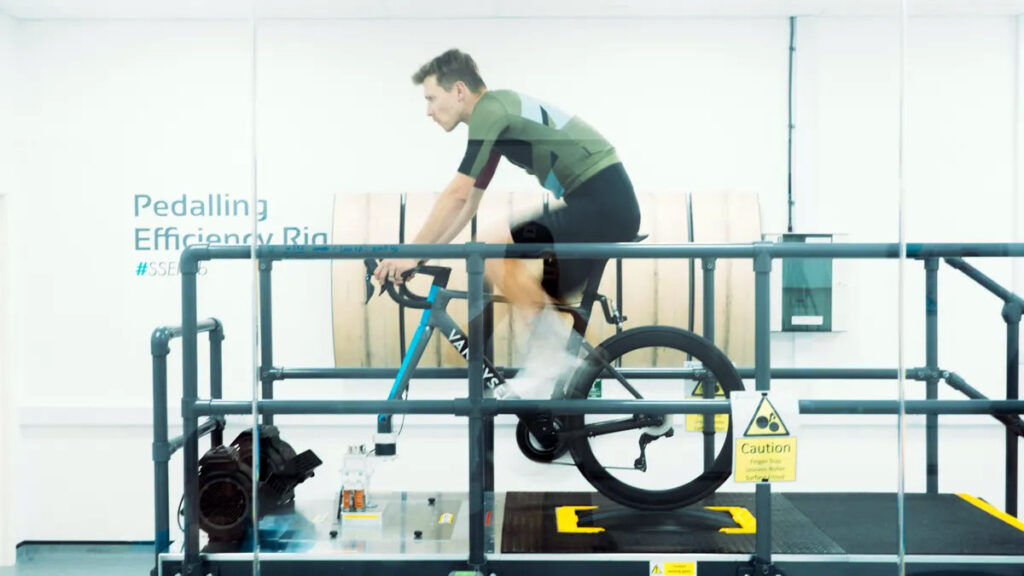
In recent years, we’ve started to look at the entire system of bike and rider. Rather than test tires by themselves in the lab, we test the complete system of bike-and-rider. Way back in 2006, we started doing tests on real roads (under carefully controlled conditions, to eliminate other variables). Cyclingnews.com tested in a lab (above), also with a rider on board.
These tests looked at the entire picture, rather than just one element. Here’s what they found: Harder tires flex less, but also transmit more vibrations. And vibrations cause suspension losses that slow down the bike.
The two effects cancel each other. Narrow tires at high pressure absorb very little energy in the tire itself, but lose lots of energy to vibrations. Wide tires at low pressures are the opposite: The tires lose more energy, but vibrations are much-reduced. What this means: The added comfort, better grip and fewer flats of wide tires don’t come with a speed penalty. That’s a revolutionary discovery—and it’s the reason why even pros race on wide tires these days.
That’s on smooth roads. When you hit rough roads like the cobblestones of Paris-Roubaix, cyclingnews.com found savings of 75 watts by going to 40 mm tires. That’s huge! In Rene Herse’s tests on rumble strips, we found that the upper limit of energy lost to vibrations is even higher—up to 290 watts in really extreme conditions. Anything you can do to reduce vibrations under those conditions will make you faster—by a lot.
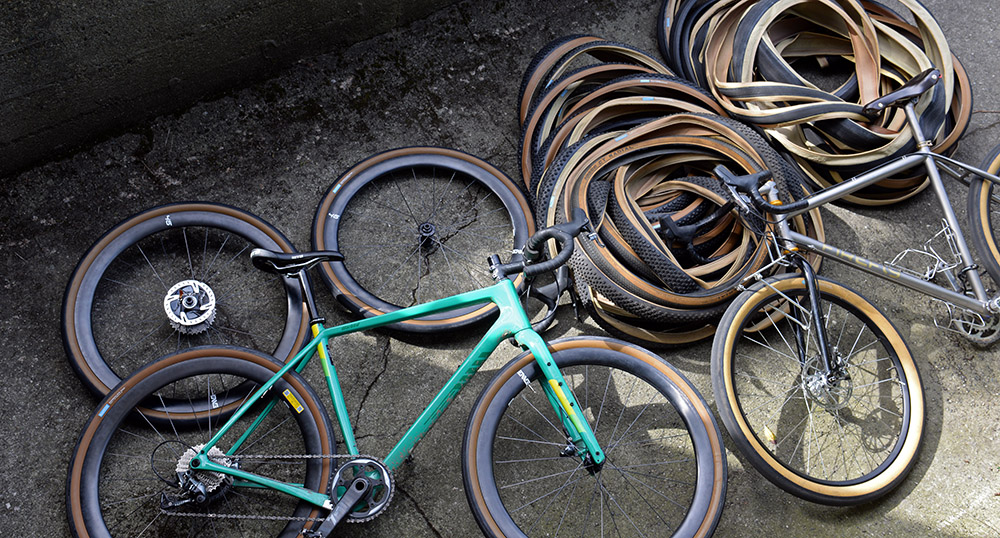
How wide can you go? Cyclingnews.com went to 40 mm. We tested all the way to 55 mm-wide tires. Both tests found that there is no speed penalty for wider tires—provided they are made with the same supple casings. In other words, the speed of a tire depends on how it’s made, not how narrow it is or how hard it is inflated.
What about tires that are even wider than 55 mm? At that point, we are running into other problems: It’s hard to fit such ultra-ultra-wide tires between road-bike cranks with a narrow Q factor. Wider cranks, like those found on mountain bikes, have been shown to reduce pedaling efficiency. That’s OK when you’re heading into technical terrain on a mountain bike. For road and gravel riding, most of us don’t want to give up our efficient spin. That’s really the limit for how wide we can go.

What about aerodynamics? Aren’t wide tires less aero? Not by much, if at all. It’s important to remember that we’re talking about a few millimeters in extra width on each side. Even a 40 mm tire is narrower than the down tubes of most modern carbon bikes. And it’s not like anybody is concerned about the width of their down tube…
Both our tests and cyclingnews.com found that at speeds up to 35 km/h (22 mph), wide tires aren’t slower—with the aero factored in. If you’re time trialing at much-higher speeds, aero wheels provide a significant advantage. And aero wheels only work well with relatively narrow tires, because you want a smooth transition from tire to rim—the tire shouldn’t be much wider than the rim. And you can’t just make the rim wider, because then it also needs to be much deeper, and you get into issues with cross-wind instability. That’s why it seems unlikely that TT bikes will go to much-wider tires in the future.
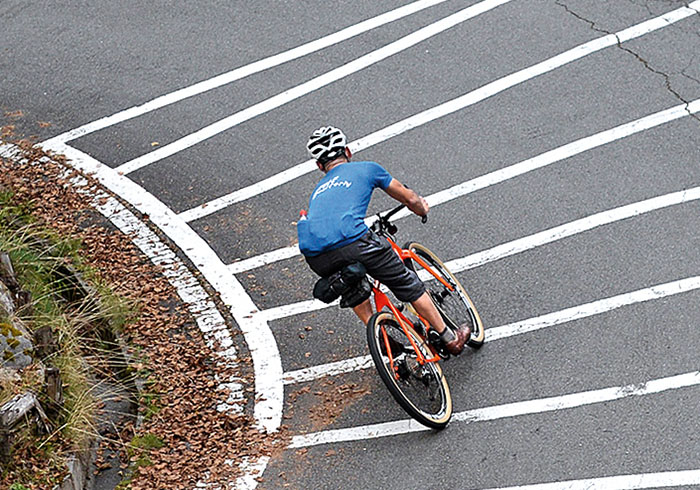
Another plus of wide tires is cornering grip. Everybody knows that racecars and Moto GP motorbikes have ultra-wide tires, because they provide more grip in corners. The same is true for bicycles, for two reasons:
- More rubber on the road gives you more traction.
- Wider tires are inflated to lower pressures, which means they stay in contact with the road. Hard, narrow tires bounce over small road irregularities, which can cause them to lose traction.
If you like to corner fast, you want the widest tires possible. Even on smooth pavement, the difference between 30 mm and 38 mm-wide tires is very noticeable. On rough surfaces and especially on gravel, it’s really no contest.
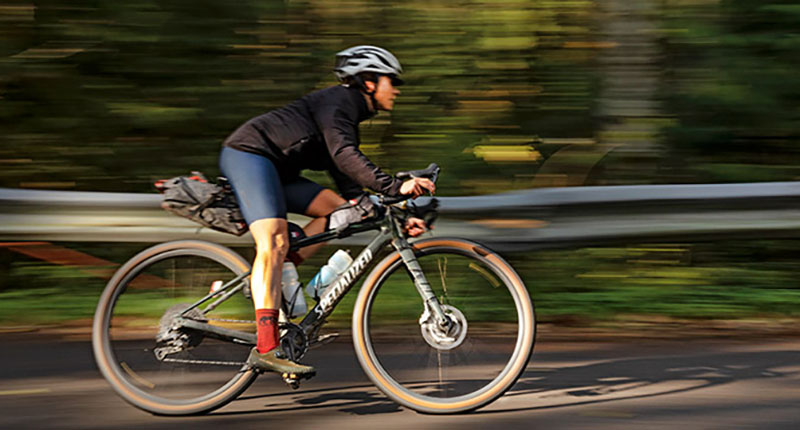
So we know that supple casings are important, and that width doesn’t matter. What size tires should you run then? Is wider always better?
A lot depends on how you want your bike to feel. Do you prefer a super-plush ride, or do you want to feel connected to the road surface? Do you climb and sprint out of the saddle, or do you stay seated most of the time? Do you prefer a bike that’s nimble and agile, or one that corners as if it was on rails?
Let’s look at a few popular wheel sizes, with their pluses and minuses…
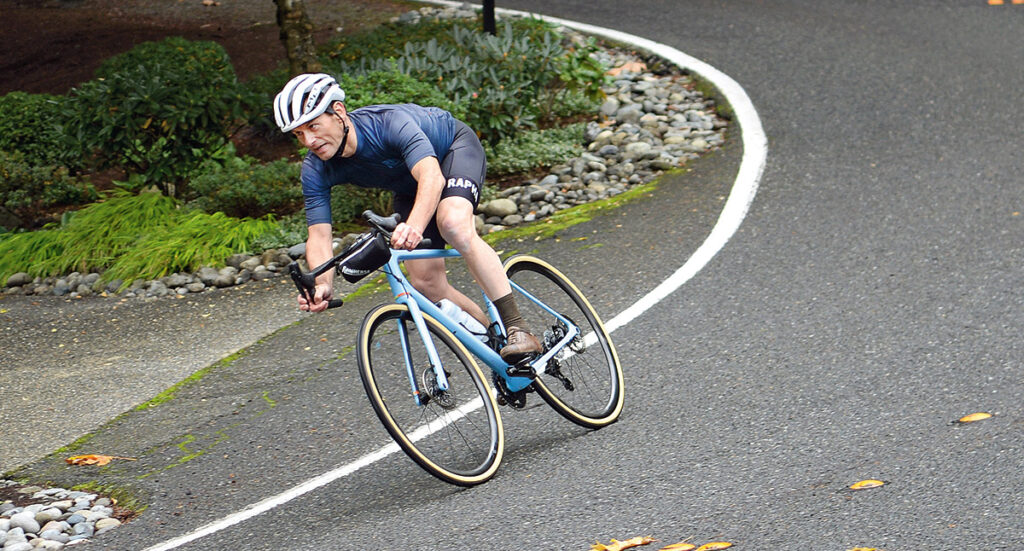
31-32 mm wide
- Most modern road bikes can fit 32 mm tires, and that is a very good thing.
- Even featherweight pro racers are on 30 mm tires—a little extra width makes sense for the rest of us.
- You still get the ‘connected-to-the-road’ feel that makes road bikes so much fun, without harshness, even on rough pavement.
- With 31-32 mm tires, road bikes are fast and fun not only on smooth highways, but also on backroads that are much more scenic (and have less traffic).
- In a pinch, you can take 31-32 mm tires on gravel, too—even if it’s just a detour around a construction site.
- If you run aero wheels, any wider than 31-32 mm, and your tires get too wide to blend smoothly into the deep-dish rims.
- 31-32 mm tires are lighter than wider tires. The lower rotational inertia makes the bike easier to rock from side to side when you climb or sprint out of the saddle.
- Less rubber on the road means less stability due to an effect called ‘pneumatic trail.’ This makes the bike more nimble.
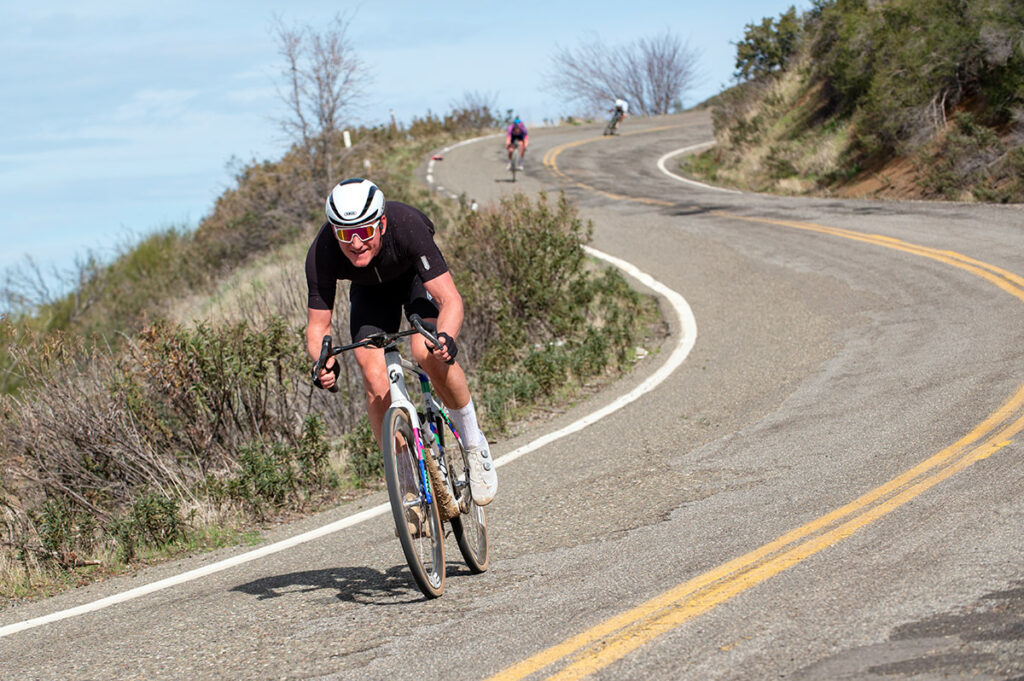
35 mm wide
- 35 mm tires are great for pavement and occasional gravel riding.
- If you’re a heavy rider like national gravel champ Brennan Wertz (above, on the way to winning this year’s Huffmaster Hopper), 35 mm is a great choice even for road racing.
- You don’t give up any speed, and very little road feel, on smooth pavement.
- You can carry more speed when the road gets bumpy.
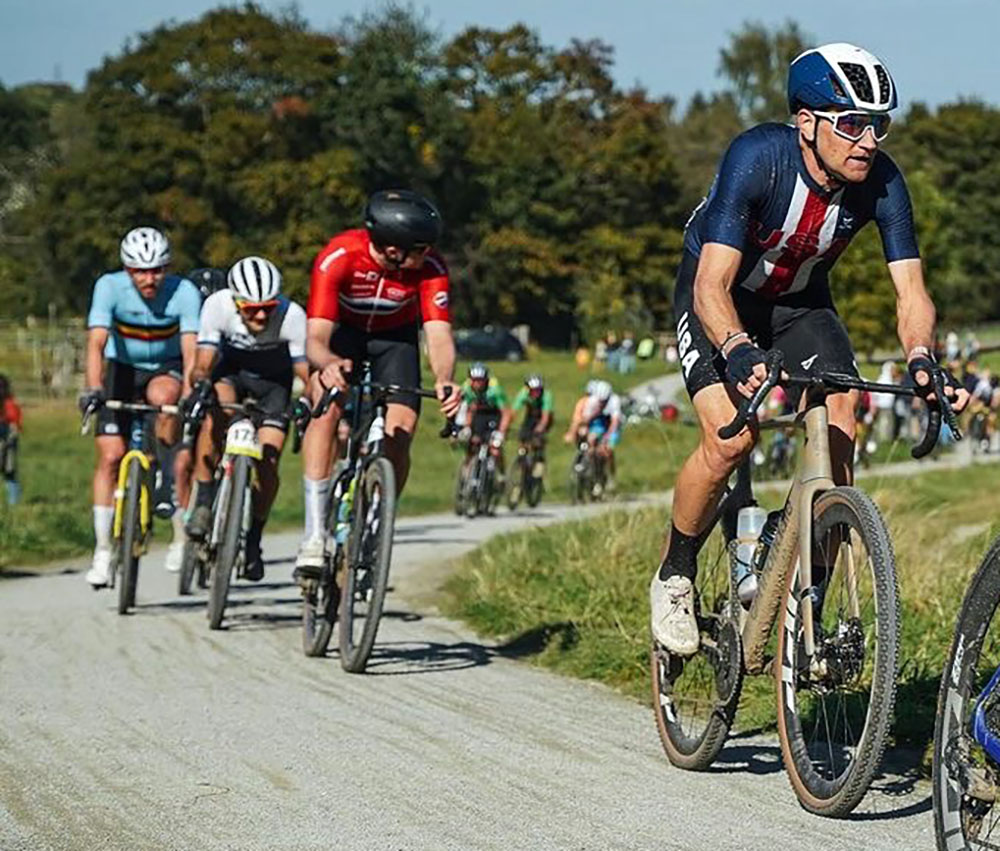
38 – 44 mm wide
- This range used to be gravel-only in the past, but it also works well on the road.
- For most riders, smooth-road speed is unchanged with wider tires.
- You gain comfort and also speed over rough road sections.
- There’s less risk that your tires get caught in small cracks in the road: Wider tires are safer, too.
- In exchange for the extra cush, you lose a little bit of connection to the road.
- 38 mm tires are a great choice for most riders.
- 44 mm tires are perfect for riders who like to push the limits of cornering grip on pavement, as well as riders who regularly explore gravel roads.

48 – 55 mm wide
- Now we are getting into some seriously wide tires for a road bike! A 55 mm tire holds twice as much air as a 38 mm tire.
- Tires this wide change their feel depending on the pressure you run:
- Inflated to ‘firm’ pressure, your bike feels like a road bike. The wide tires make more noise as they roll over the pavement, but otherwise, they feel similar to narrower tires—but with much more grip in corners.
- Reducing the pressure to ‘soft’ changes the bike completely. Now it is super-plush. The tires still have enough air so they won’t collapse under hard cornering. At this pressure, the tires are ideal for rough gravel. The downside is that strong riders start to feel ‘suspension bob’ when riding out of the saddle.
- To figure out ‘soft’ and ‘firm’ tire pressures for your weight and tire size, check the Rene Herse Tire Pressure Calculator.
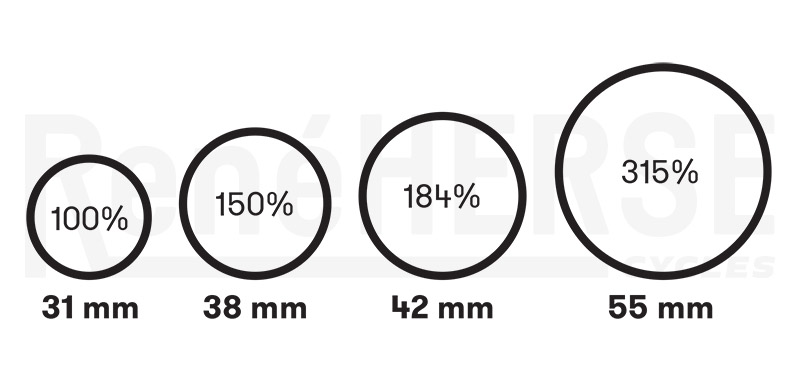
When comparing tire sizes, it’s important to think about air volume. Going from 31 mm to 38 mm gets you 50% more air volume—more comfort, more grip, and less risk of flats. Going up to 55 mm, you have more than three times the air volume of the 31 mm tire. A tire that wide can take you almost anywhere.
Summary:
- If you want to channel your inner road racer, 31-32 mm tires are a great choice. Anything narrower only adds harshness, with no gains in speed or road feel. If you’re a heavier rider or ride on roads with rough pavement, 35 mm is a great choice.
- If your bike can take wider tires, but you still want to feel connected to the pavement, try 38 mm tires. You gain comfort and safety without losing speed.
- If you prefer better rough-road performance and even more cornering grip, choose 44 mm. You lose a little of the connection to the road, but during hard cornering, you actually get more, not less, feedback of how much grip you have in reserve.
- If your rides include a lot of gravel, you’ll be happiest on 48 or even 55 mm tires. Rolling resistance is lower on the rough stuff. Just as importantly, you can push hard without worrying about bottoming out or cutting a tire, and you have more traction, too. On pavement, there is a little more tire roar, and the bike’s feel is more sensitive to tire pressure. On the plus side, the grip in paved corners will blow your mind.
- When in doubt, go wider. You don’t give up speed, and you gain comfort, grip and safety. (Head to the link at the end of this post to find out how to measure the tire clearances of your bike.)
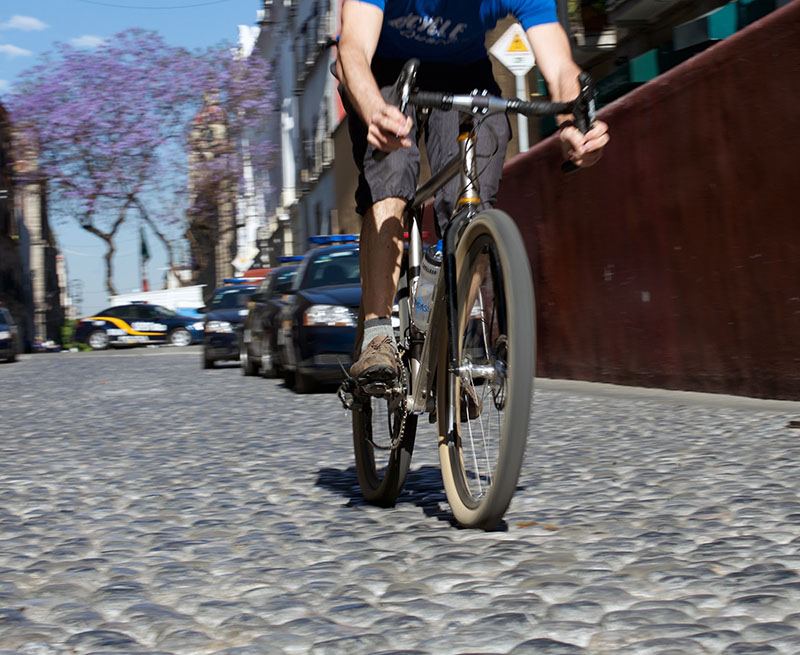
Don’t forget the tire casing! It’s easy to focus on tire width, but much more important is the quality of your tires. A supple high-performance tire is always going to be much faster and more comfortable than a heavy and stiff budget model, regardless of width. That’s also good news if you’ve got an older bike with limited tire clearance: Upgrading to a set of supple tires will give you greater speed and comfort benefits than adding a few millimeters in width.
I want to be honest: There are downsides of supple, high-performance tires: They’re a little more fragile, and also cost more. Fortunately, that has become much less of an issue as riders have moved to wider tires:
- Wider tires suffer from fewer flats because they run at lower pressure. A soft tire deflects when it hits a sharp object. A hard tire punctures. Imagine somebody stepping on your toes with a stiletto heel (high pressure) or a running shoe (low pressure). You know which will hurt more… If you’re a ‘flat-prone’ rider, use a high-quality reinforced tire like the Rene Herse Endurance models. Run your tires tubeless or use a sealant inside TPU tubes to seal small punctures.
- Wider tires last longer, because they spread the wear over a greater surface area. For example, a 44 mm tire will last twice as long as a 28 mm tire, all other things being equal. That means you can splurge a bit on high-performance tires without breaking the bank.
When we first published the results our research almost two decades ago, there simply weren’t any wide high-performance tires. If you wanted a supple, fast tire, you were limited to narrow racing tires. That’s why we developed our Rene Herse program of supple high-performance tires in all widths—from 26 to 55 mm. That way, you can choose your tires as wide or narrow as you want, without having to give up the comfort and speed that makes riding great tires so much fun.
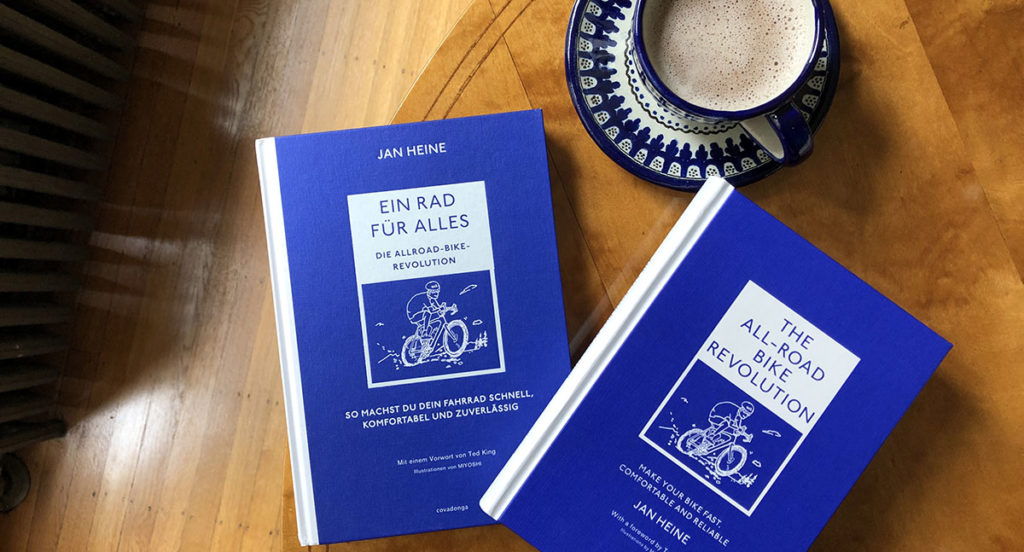
More Resources:
- The All-Road Bike Revolution, our book about the science that has revolutionized bicycles over the last 15 years.
- The Rene Herse Tire Pressure Calculator is based on hundreds of measurements of real-road rolling resistance.
- Rene Herse tires offer supple casings in all widths, with a choice from ultra-fast Extralight casings to ultra-tough Endurance casings.
- cyclingnews.com article about their tire testing.
- What’s the widest tire that fits on my bike?
Photo credits: Jered Gruber (Photo 4), Rugile Kaladyte (Photo 6), Brian Tucker (Photo 8), all used with permission


